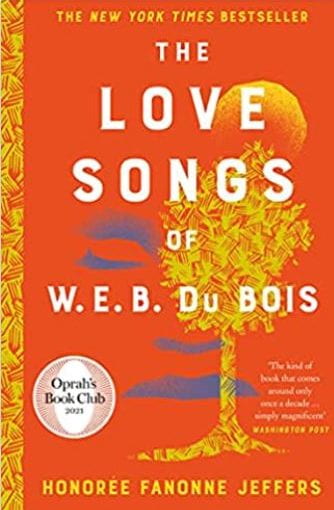This book was seven hundred and ninety seven pages of wonderfulness and I can completely understand why it took a decade to research and write.
W.E.B. Du Bois is a real person who had a theory called ‘talented tenth’ that hypothosised that if ten percent of Black people were well-educated they would transform the lives of all Black people; no more poverty, ill-health and struggle. The songs in the title are times or events in the lives of a family through the centuries reflecting stories that come back round and go round and round, repeating themselves and revealing why things are.
The story that links everything together is that of Ailey Garfield who lives in Chicasetta, Georgia, the place where her family have been for a long time – from enslavement, to the near past telling how Black people are mixed with white people and Native Americans. It is definitely a story of colour – from white to ‘dark-dark’ and everything in between and how this has affected lives. At one point Langston Hughes poem Harlem Sweeties is referenced
Have you dug the spill
Of Sugar Hill?
Cast your gims
On this sepia thrill:
Brown sugar lassie,
Caramel treat,
Honey-gold baby
Sweet enough to eat.
Peach-skinned girlie,
Coffee and cream,
Chocolate darling
Out of a dream.
Walnut tinted
Or cocoa brown,
Pomegranate-lipped
Pride of the town.
Rich cream-colored
To plum-tinted black,
Feminine sweetness
In Harlem’s no lack.
Glow of the quince
To blush of the rose.
Persimmon bronze
To cinnamon toes.
Blackberry cordial,
Virginia Dare wine—
All those sweet colors
Flavor Harlem of mine!
Walnut or cocoa,
Let me repeat:
Caramel, brown sugar,
A chocolate treat.
Molasses taffy,
Coffee and cream,
Licorice, clove, cinnamon
To a honey-brown dream.
Ginger, wine-gold,
Persimmon, blackberry,
All through the spectrum
Harlem girls vary—
So if you want to know beauty’s
Rainbow-sweet thrill,
Stroll down luscious,
Delicious, fine Sugar Hill.
Ailey eventually decides that what she wants to do is become a historian, guided by her wonderful Uncle Root, which sets her off researching her family. The story line is not linear but links repeat stories through time such as the sexual abuse of children, gaining an education, women as equals, loss, family and racism. The words of W.E.B. Du Bois are used as a bridge between songs or stories and introduce each one.
I chose this book because it had been an Oprah Book Club choice and it was worth every single page of my time.
